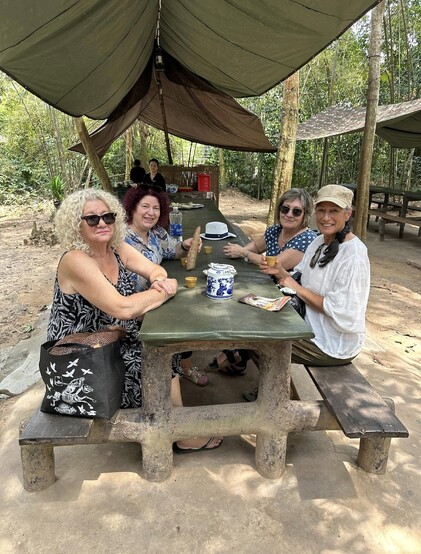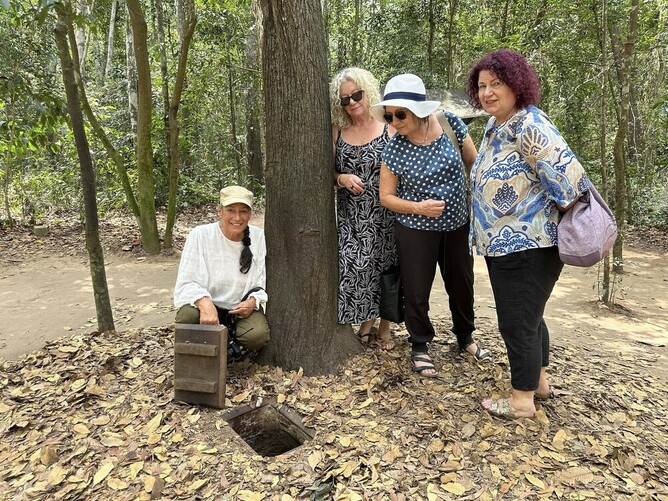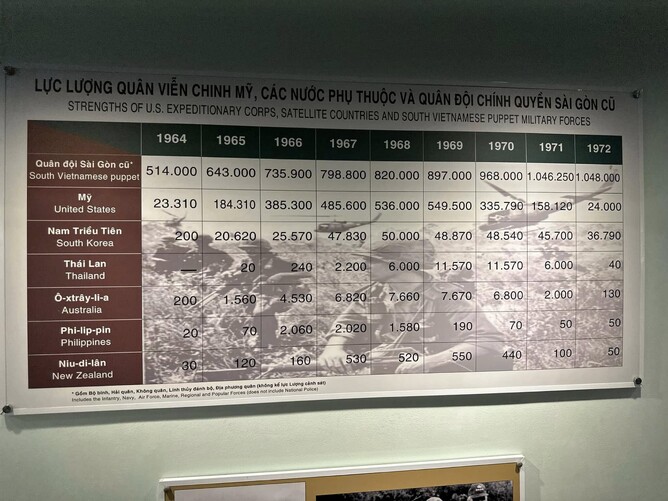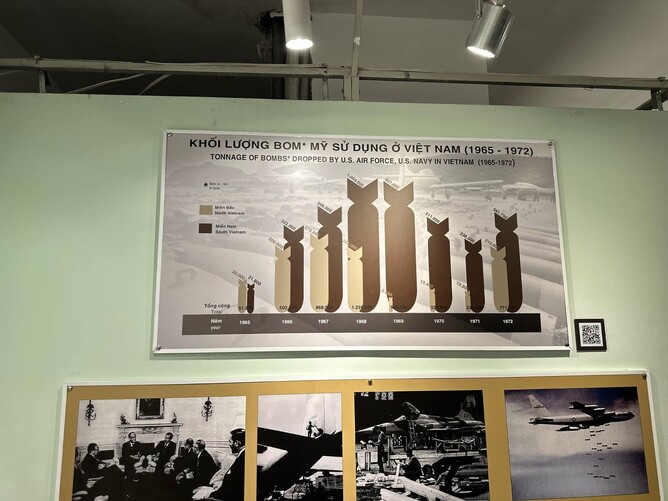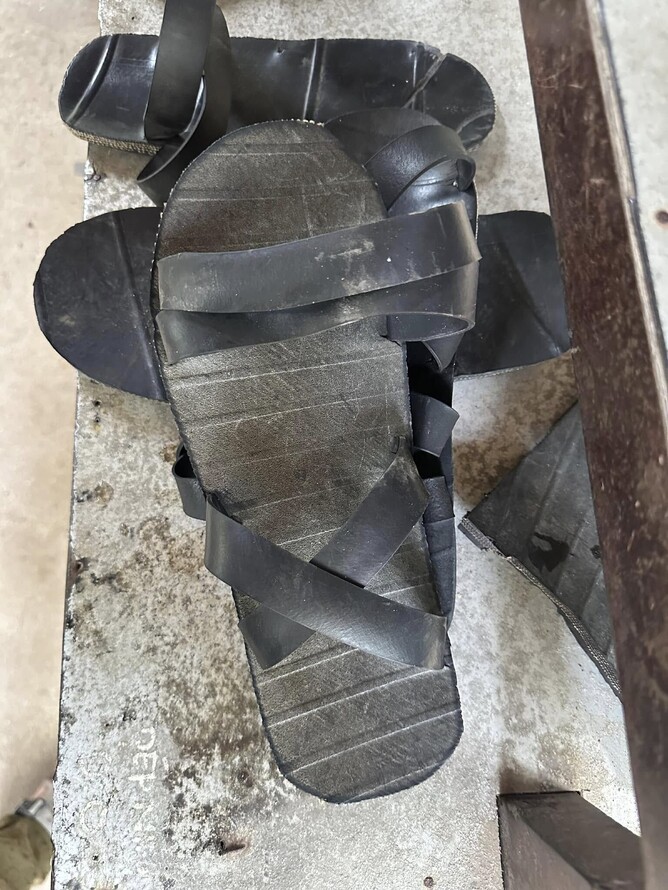Walk Gently with Me
March 2, 2025 – A caveat before we begin: Today’s journey was a challenging one. Walk gently with me.
History is often best understood not through books, but through experience—through standing where others once stood, seeing what they saw, and feeling the weight of their stories.
Saigon Post Office Ho Chi Minh City. Built between 1886 and 1891 this post office is still alive and well for writers of letters and postcards from across the globe. A travellers dream. .
A Journey Through Vietnam’s Past
Our guide, Vy, carries the history of her country with a depth and nuance that belies her young age. As we travel two hours from Ho Chi Minh City to the Cu Chi Tunnels, she answers every question with care, no matter how unexpected. She is multilingual, present, and deeply thoughtful, carefully considering how best to provide context—because context is everything.
Cooked tapioca plants and Jasmine tea were the staple foods for the people living in the tunnels. Here we experience their tastes. I liken the boiled tapioca root to kūmara / taro. Dipped in a sugar and crushed peanut mix, I found it surprisingly pleasant and filling. I thought about the underground people sharing this kai in the darkness of their rooms beneath.
The Cu Chi Tunnels: An Underground World
The Cu Chi Tunnels were built over approximately 20 years (1946–1968), stretching 250 kilometers beneath the earth. They were not just escape routes but an entire subterranean ecosystem, a hidden fortress where Vietnamese resistance fighters and civilians lived, worked, and survived during the colonial wars.
The ingenuity is staggering. Built beneath nearly impenetrable volcanic rock, these tunnels held:
Hospitals
Supply routes
Communication centers
Undetectable airflow tubes
Water access & waste removal systems
Cooking smoke outlets camouflaged by morning and evening mist
The sheer complexity and problem-solving that went into this underground network left me in awe. It functioned like a living organism, an independent stronghold woven into the earth.
Entrance to one of the Cu Chi Tunnels used by the Vietnamese underground network. These entrances were made larger for tourists to enable them to stand inside them.
Standing at Ground Zero
Above ground, we walked through the stories of the tunnels, absorbing their history. Then, we found ourselves standing at a B52 bomb drop site—Ground Zero.
I paused.
As a nurse, I could only wonder: Who were the people caring for the wounded, the dying, and the survivors in the dark hospitals below? What were their stories?
Remnants of war. I think of my Dad in WW2 in Italy. He was part of the Armoured Tank Division, New Zealand. Although smiling in this pic, in reality, the atmosphere feels heavy for me.
The War Remnants Museum: A Test of Humanity
Later, we visited the War Remnants Museum—a confronting yet necessary stop. It tests us, as individuals and as a collective humanity.
I often think about ordinary people just trying to live their lives—parents, children, elders—thrown into the chaos of war.
Despite the 1954 Geneva Convention Agreement and its supposed humanitarian protections, the Vietnam War exacted an unthinkable toll:
2 million civilians killed
Over 1 million North Vietnamese soldiers lost
Over 200,000 South Vietnamese soldiers killed
Then there’s the lasting legacy of Agent Orange.
Sobering facts at the War Remnants Museum. If you are in Vietnam it is well worth a visit. I gained much insight into this war. A palpable silence evident in the museum rooms full to the brim with tourists.
The Lasting Impact of Agent Orange
Between 1962 and 1971, the U.S. military sprayed 4.5 million acres of Vietnam’s land with Agent Orange, a toxic herbicide that left devastation in its wake.
To this day, there has been no accountability from its manufacturers or those who used it.
The numbers remain staggering:
Over 300,000 U.S. veterans and 400,000 Vietnamese people have died from exposure.
The intergenerational trauma continues—affecting families, genetics, and health on all sides of the war.
The history at the War Remnants Museum is very confronting. Particularly at a time when the present world is experiencing unease and fragility. The decisions we make or don't, will influence how the future world will shape. We all bear accountability for our actions or non actions.
Lest We Forget
Some experiences stay with you long after you leave. Today was one of them.
If you ever come to Vietnam, I urge you to visit the War Remnants Museum and the Cu Chi Tunnels. Walk gently. Ask questions. Seek context. Because understanding history is the first step toward ensuring it is never repeated.
Rubber Trees are a prominent feature of the landscape towards the Ch Chi Tunnels, imported to Vietnam by French Colonists. These rubber sandals felt hard and uncomfortable to the touch. Worn backwards by the Resistance fighters living in the tunnels, these sandals were a strategic tactic to confuse enemy soldiers in tracking the directional movement of the Vietnamese, the people of the land.

